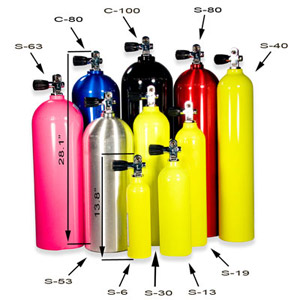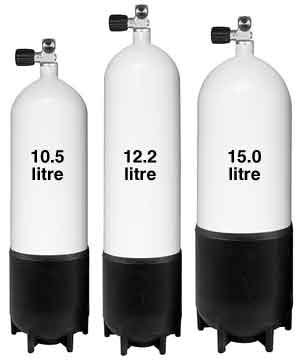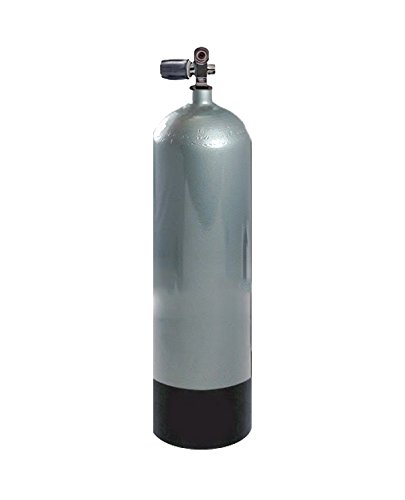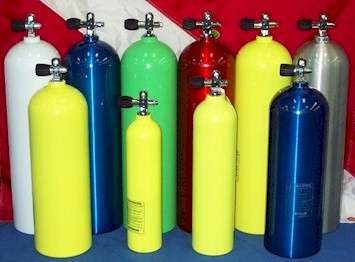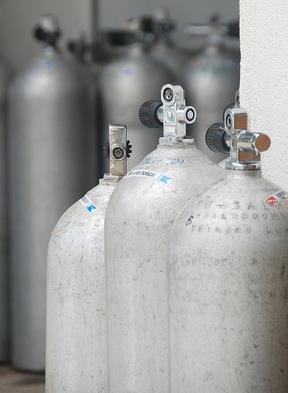Standard Scuba Tank Size

Back mounted cylinders range from 45 130 cubic feet plus.
Standard scuba tank size. Cylinders provide gas to the diver through the demand valve of a diving regulator or the breathing loop of a. The information below was compiled from a variety of sources including luxfer pressed steel tank catalina and oms. A scuba tank s capacity is determined by its size and pressure rating. Pony or bailout bottles can range from 6 40 cubic feet.
Most standard tanks are 7 25 inches in diameter but can range between 20 and 30 inches long or more. The capacity of a scuba cylinder is an important consideration. There is no perfect size tank for all diving types and all divers. Most tanks have capacities ranging from 50 to 120 cf with various compressed air pressures.
Standard psi in an aluminum scuba cylinder is 3000. The capacity of any tank is measured in pressurized cubic feet. The al100 and some of the larger capacity high pressure tanks such as the hp117 and hp133 are also 8 inches in diameter although the hp120 is a 7 inch tank. There are many sizes of scuba tanks but you will find common standards throughout the industry.
Compiled by huron scuba snorkel adventure travel inc. Standard aluminum tanks typically have a capacity of 80 cf with a. Low pressure lp with 2400 2650 psi standard pressure with 3000 psi and high pressure hp at 3300 3500 psi. A diving cylinder scuba tank or diving tank is a gas cylinder used to store and transport the high pressure breathing gas required by a scuba set it may also be used for surface supplied diving or as decompression gas or an emergency gas supply for surface supplied diving or scuba.
Tank diameters are a more significant consideration. Most primary tanks aluminum or steel are the common diameter of 7 inches. How to choose the best scuba tanks size. The information is believed to be accurate but is not guaranteed.
Capacity calculations ignore the facts that it is nearly impossible for a diver to empty the residual gas in a scuba tank below about 150 psi 10 bar due to regulator flow restrictions and that pressure gauges can be significantly inaccurate so best practice is to always plan your dive with a generous reserve. The most popular tank size that is used by recreational divers is the ones that hold 80 to 100 cubic feet of air. 80 cubic foot tanks are the most popular among recreational divers and are also the most commonly found tanks on the water.







